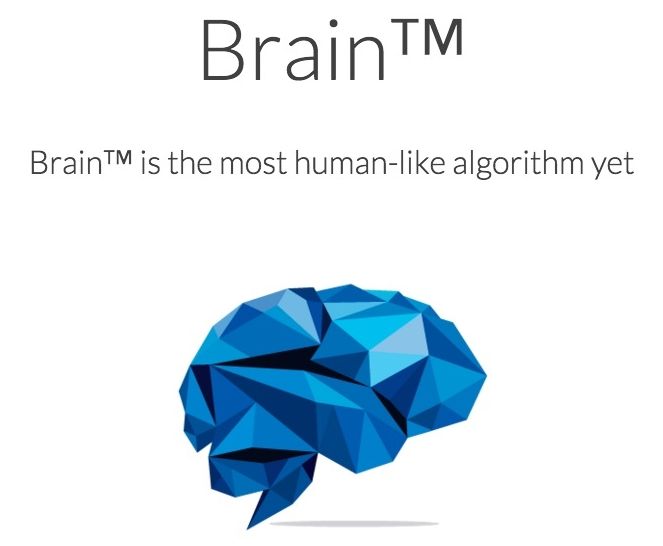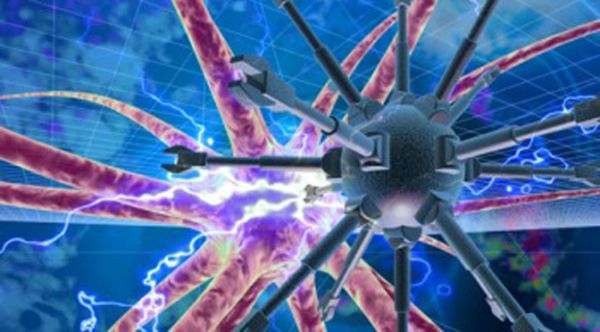Archive for the ‘information science’ category: Page 294
Sep 1, 2016
The $10 Million Race to Invent Star Trek’s Tricorder | Smithsonian
Posted by Odette Bohr Dienel in categories: biotech/medical, environmental, genetics, health, information science

“Fifty years after the show aired, Star Trek’s fictional tricorder is far from becoming a reality. But a $10 million prize from the XPRIZE Foundation is hoping to motivate inventors to create one quickly.”
Sep 1, 2016
Cargo Cult Science
Posted by Eric Baum in categories: climatology, environmental, existential risks, health, information science, philosophy, rants, science, sustainability
 Feynman told us clearly: “Science is the belief in the ignorance of experts.” Check anything from first principles and experience, ignoring no logical holes, and that is science. Cargo Cult Science arises when the opposing arguments aren’t emphasized. Experts then form and pass down firm beliefs that are delusions. Cargo Cult science is like a perfect replica radio made all of wood: it may have all the trappings of degrees and chairs and journals, but it is missing the key ingredient and won’t function.[1][2]
Feynman told us clearly: “Science is the belief in the ignorance of experts.” Check anything from first principles and experience, ignoring no logical holes, and that is science. Cargo Cult Science arises when the opposing arguments aren’t emphasized. Experts then form and pass down firm beliefs that are delusions. Cargo Cult science is like a perfect replica radio made all of wood: it may have all the trappings of degrees and chairs and journals, but it is missing the key ingredient and won’t function.[1][2]
Vaccine science is cargo cult science according to Feynman’s definition. There are a ton of peer reviewed papers demonstrating that vaccine aluminum is damaging, that vaccines are full of contaminants, that they can disrupt brain and immune system development, that the smallpox vaccine was ineffective, the polio vaccine is of questionable utility, other vaccines’ immunity wanes after only a few years. They never rebut as you can easily verify yourself by examining the citation list here for opposition and then searching the vaccine survey pdfs for the cites. They just ignore it.[3][4][5]
Climate science is cargo cult science. Climate “scientists” have been known to “hide” their own most interesting data, the data contradicting the prevailing theory which is what Feynman said a scientist should emphasize most prominently[6][7]. Alternative theories and methodological objections are ignored or white washed. (Search the IPCC reports for discussion of the opposition.) To say a science is cargo cult science is not to say that there are no papers published in it that are science, but it is to say one should repose zero or negative confidence in any pronouncement one has not personally verified from first principles.
http://TruthSift.com supports Feynman’s model of science applied to everything. Just as in mathematical practice, you can post proofs and refutations. But nothing is considered established unless every proposed refutation has an established counter-refutation. No proposed refutation can be ducked, and anybody who believes they have a rational objection may post it (and see the establishment statuses reflect the objection in real time). Try it out. Check out (and please contribute to) the ongoing diagrammings of the vaccine/climate science etc literatures. When they have passed through true logical review, confronting all the opposing arguments, what remains will be a genuine science.
[1] Richard P Feynman, What is Science? (1968) http://www-oc.chemie.uni-regensburg.de/diaz/img_diaz/feynman…nce_68.pdf
[2] Richard P Feynman, CARGO CULT SCIENCE (adapted from Caltech Commencement Address 1974) https://www.lhup.edu/~DSIMANEK/cargocul.htm
[3] Eric Baum The Top Ten Reasons I Believe Vaccine Safety Is an Epic Mass Delusion (2016) https://lifeboat.com/blog/2016/06/the-top-ten-reasons-i-beli…s-delusion
[4] TruthSift Topic: Are Vaccines Safe? (2016) http://truthsift.com/search_view?statement=Vaccines-are-Safe…p;nid=4083
[5] TruthSift Topic: The Evidence is Weak Vaccines Have Saved More Lives than They Have Cost (2016), http://truthsift.com/search_view?topic=The-Evidence-Is-Weak-…amp;id=520
[6] Climate data hidden both early (data showing very rapid rise before 1500) and in 20th century (showing decline): https://climateaudit.org/2011/03/21/hide-the-decline-the-other-deletion/
[7] More data contradicting theory hidden. https://climateaudit.org/2011/12/01/hide-the-decline-plus/
Aug 31, 2016
Beauty through the eye of an AI: Algorithm chooses attractive selfies
Posted by Shailesh Prasad in categories: information science, robotics/AI

Beauty is in the eye of the beholder, but for one contest the beholders are AI. Beauty.AI used 5 robots to judge 6,000 selfies and choose winners for an international beauty contest.
Aug 31, 2016
Physicist proposes new equation that could transform physics
Posted by Karen Hurst in categories: information science, quantum physics

In 1935, physicists published two papers introducing key concepts on the theoretical understanding of the universe: wormholes and quantum entanglement.
But, what if these two separately described phenomena were actually the same thing?
Continue reading “Physicist proposes new equation that could transform physics” »
Aug 31, 2016
Welcome to the digital health revolution
Posted by Klaus Baldauf in categories: biotech/medical, computing, economics, government, health, information science
Blended Reality is a versatile concept that can be extended from the physical and digital worlds to the chemical and biological world. In the convergence of healthcare diagnostics and digital health, it can play a fundamental role: the transformation of human biology, real-world parameters into digital data to obtain contextual health information and enable personalized drug treatments. The fusion of microfluidics, edge computing and commercial mobility with diagnostics, digital health, big data, precision medicine, and theranostics will disrupt existing, established structures in our healthcare system. This will allow new models of partnerships among technology and pharmaceutical industries (see fig. 1).
From the very beginning of mankind, healthcare was purely empirical and mostly a combination of empirical and spiritual skills. While access to cures was exclusive and very limited, the success rate was not very high in most cases. During the Renaissance a systematic exploration of natural phenomena and physiology laid the scientific foundation of modern medicine. A real breakthrough in quality and access to healthcare services has taken place in the past 150 years as an aftermath of the Industrial Revolution. It brought significant advances in science as well as societal changes: expanding government-granted access to the establishing working classes as the main human capital of the industrialization process in the Western Hemisphere. Keeping a business employees healthy became an indispensable prerequisite to increasing the national economic output and well-being on a societal level.
Aug 30, 2016
Could an algorithm help to save people’s eyesight? Google thinks so
Posted by Shailesh Prasad in categories: biotech/medical, information science, life extension, robotics/AI

Google’s artificial intelligence research lab DeepMind is exploring whether its technology could be used to identify early signs of eye diseases that ophthalmologists might not spot.
DeepMind, which was acquired by Google in 2014, has struck an agreement with Moorfields Eye Hospital in London that gives it access to about a million anonymous retinal scans, which it will feed into its artificial intelligence software.
Continue reading “Could an algorithm help to save people’s eyesight? Google thinks so” »
Aug 27, 2016
How quantum computers will change the world of hacking
Posted by Karen Hurst in categories: cybercrime/malcode, encryption, information science, quantum physics
There is a computing revolution coming, although nobody knows exactly when. What are known as “quantum computers” will be substantially more powerful than the devices we use today, capable of performing many types of computation that are impossible on modern machines.
But while faster computers are usually welcome, there are some computing operations that we currently rely on being hard (or slow) to perform.
Specifically, we rely on the fact that there are some codes that computers can’t break – or at least it would take them too long to break to be practical. Encryption algorithms scramble data into a form that renders it unintelligible to anyone that does not possess the necessary decryption key (normally a long string of random numbers).
Continue reading “How quantum computers will change the world of hacking” »
Aug 27, 2016
A First: Israeli Scientists “Have Used the Human Mind to Control Nano Robots Inside a Living Creature”
Posted by Shailesh Prasad in categories: biotech/medical, computing, information science, neuroscience, robotics/AI
Researchers at Bar Ilan University and the Interdisciplinary Center in Herzliya, both in Israel, have developed new technology that allows tiny bots to release drugs into the body controlled by human thought alone. The test involved a man using his thoughts to activate nano robots inside a cockroach.
The bots have been built using a DNA origami structure with hollow shell-like components, and they come with a “gate” that can be opened and shut with the help of iron oxide nanoparticles that act as a “lock” – which can be prized open using electromagnetic energy.
The Israeli team believe the bots could help in controlled release of drugs over time. Led by Dr Ido Bachelet of Bar Ilan University, scientists demonstrated how to control this process with human brainwaves. Using a computer algorithm, they trained the system to detect when a person’s brain was under strain from doing mental arithmetic. The team then placed a fluorescent drug in the bots and injected them into various cockroaches that were placed inside an electromagnetic coil.
Aug 27, 2016
Ray Kurzweil Explores How Self-Driving Cars Will Choose Between Life or Death
Posted by Elmar Arunov in categories: computing, information science, Ray Kurzweil, robotics/AI, transportation

Driving a motor vehicle requires making tough choices in the heat of the moment. Whether slamming on the brakes in traffic or speeding up before a light turns red, split-second decisions are often a choice between the lesser of two evils. Sometimes, a choice could lead to bodily injury or even a loss of life.
As more self-driving cars reach the road, life-and-death decisions once made by humans alone will increasingly shift to machines. Yet the idea of giving that responsibility over to a computer may be unsettling to some.
Continue reading “Ray Kurzweil Explores How Self-Driving Cars Will Choose Between Life or Death” »











